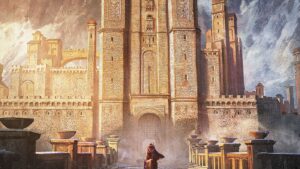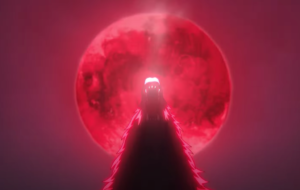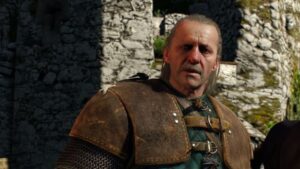So…remember when I reviewed the first brief teaser for Netflix’s upcoming Witcher anime prequel Nightmare Of The Wolf, and I said that from what we could see of the film’s protagonist, Vesemir, he looked, you know, moderately attractive? Yeah, well, that was then. This is now. And today, we were blessed with a full-length trailer for Nightmare Of The Wolf…and a much, much better look at Vesemir, the gorgeous, sassy, hilarious 2D hunk with whom the entire Witcher fandom is currently obsessed.
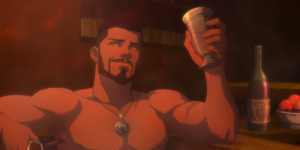
But why? Why is Vesemir hot? Who looked at the grouchy, solemn, closed-off elderly character from Andrzej Sapkowski’s Witcher novels and thought “he was probably a total beefcake once upon a time”? To be honest…I don’t know. Trust me, I wish I knew, so I could give that person a well-earned shoutout for their bold imagination.
But looking at it from a thematic perspective, I can see where it makes sense. Vesemir, as in the Vesemir we’ll be introduced to in Nightmare Of The Wolf just a month from now, is a completely different kind of Witcher from his student, Geralt of Rivia, whose journeys we’ve followed in The Witcher season one. Vesemir is vivacious, talkative, and confident. He already seems genuinely appealing to be around, and to say he’s easy on the eyes would be an understatement. Geralt is…none of that (well, let’s be honest, he’s still easy on the eyes because Henry Cavill is still Henry Cavill no matter how hideous the wig and contact lenses he’s forced to wear, but he’s definitely more weathered than Vesemir). By Geralt’s time, the Witchers enjoy none of the privileges and luxuries they were awarded during Vesemir’s heyday, so this kind of deterioration is logical.
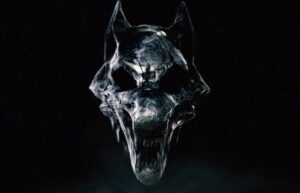
So what changes? What happens to Vesemir that transforms him from a cheeky, stunningly attractive maverick into a dour, gloomy old man wasting away in the mountaintop fortress of Kaer Morhen with the rugged remnants of the once-mighty brotherhood of Witchers? Well, I’m gonna guess that in Nightmare Of The Wolf at least, it will be explained as the aftermath of an attack on Kaer Morhen which, in Sapkowski’s novels, plays a pivotal role in Vesemir’s early life, sobering him to reality. Because it’s no horde of vampires or leshen or werewolves who attack the citadel of the Witchers, but a mob of ordinary people stirred up to violence against a group they view as not only outsiders, but literally subhuman. That the Witchers are also keeping ordinary people safe from the vampires and leshen and werewolves is something that only becomes apparent in hindsight, after their ranks have been depleted in the massacre.
By Geralt’s time, there’s only a couple of Witchers still roaming the Continent, scavenging for an existence and still doing the wearisome work of hunting and killing monsters to protect people who view them as no better than beasts themselves. There’s plenty of juicy thematic material to work with there, if you’re not won over by the sheer sight of a bare-chested Vesemir lounging in a bathtub – a wonderful homage to the iconic image of Geralt in a bathtub from the CD Projekt Red video games that was also mirrored in season one of The Witcher. Even though Geralt won’t have any more bathtub scenes in season two, the franchise will continue to provide us with more “man flesh”, according to Cavill, and Nightmare Of The Wolf‘s Vesemir proves that that is very much the case.

And if you’re just here for monster battles and epic fight scenes, that’s cool! Nightmare Of The Wolf seems to have plenty of those, too. But I’m gonna be honest with you, I am living for the irreverent humor and light-hearted tone of this trailer. It’s a complete heel-turn from the dark and gloomy teaser, and it makes me a lot more interested in Vesemir as a character, rather than a monster-killing machine – and not just him, but also his supporting characters, including the sorceress Tetra Gilcrest. I believe she’s an entirely original character created for Nightmare Of The Wolf, and I wonder if she’ll appear in live-action at some point and reunite with the older Vesemir, played by Kim Bodnia, whom we’ll meet in The Witcher season two come December. I’m not really sensing any romantic chemistry between the two, but the gay/lesbian solidarity vibes are off the charts.
Trailer Rating: 8.5/10
